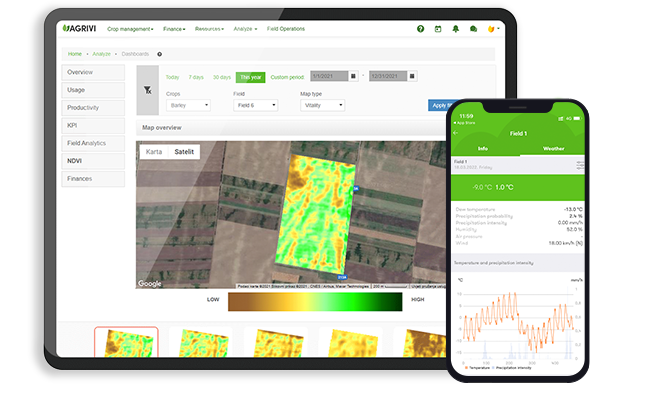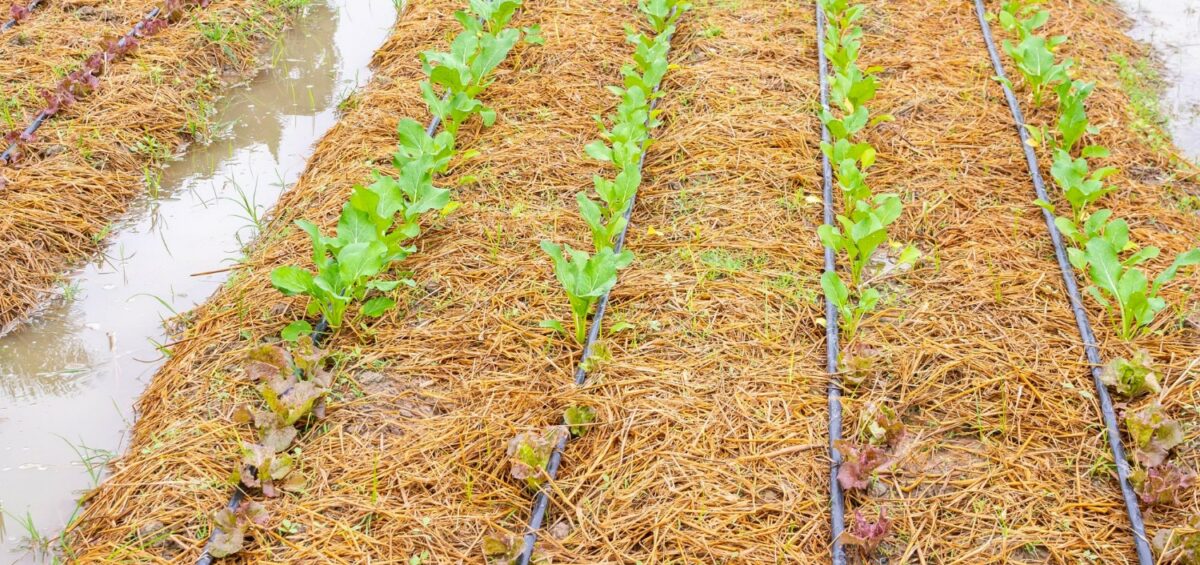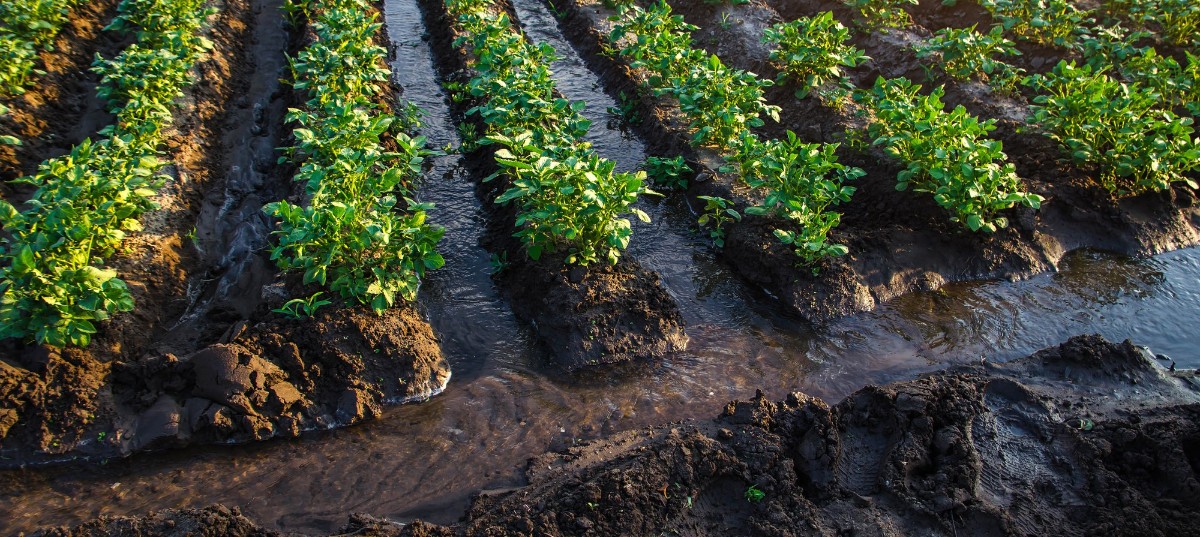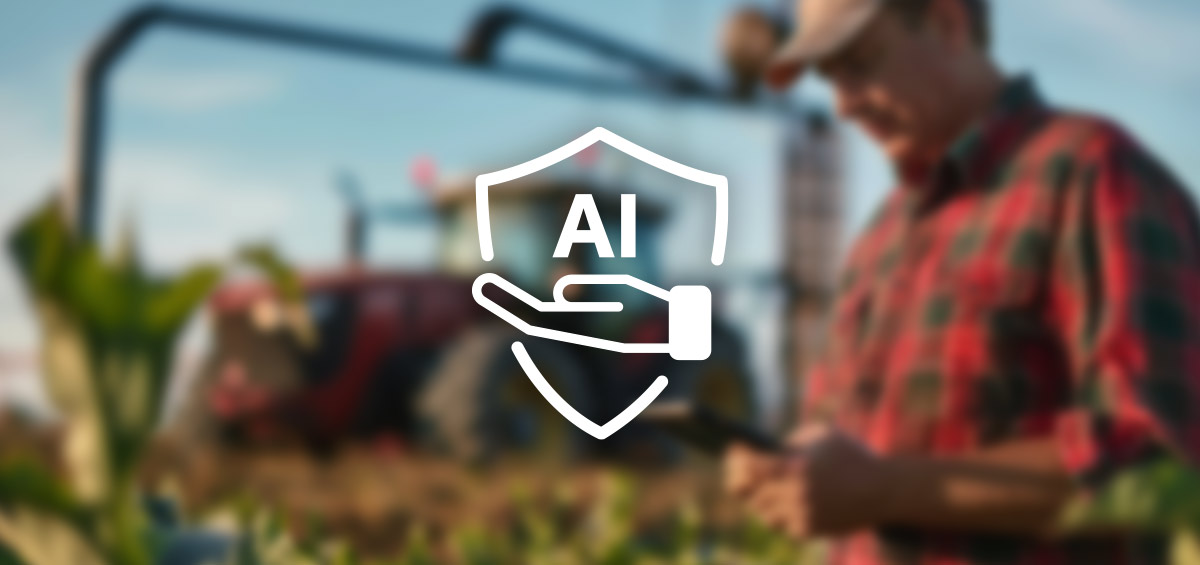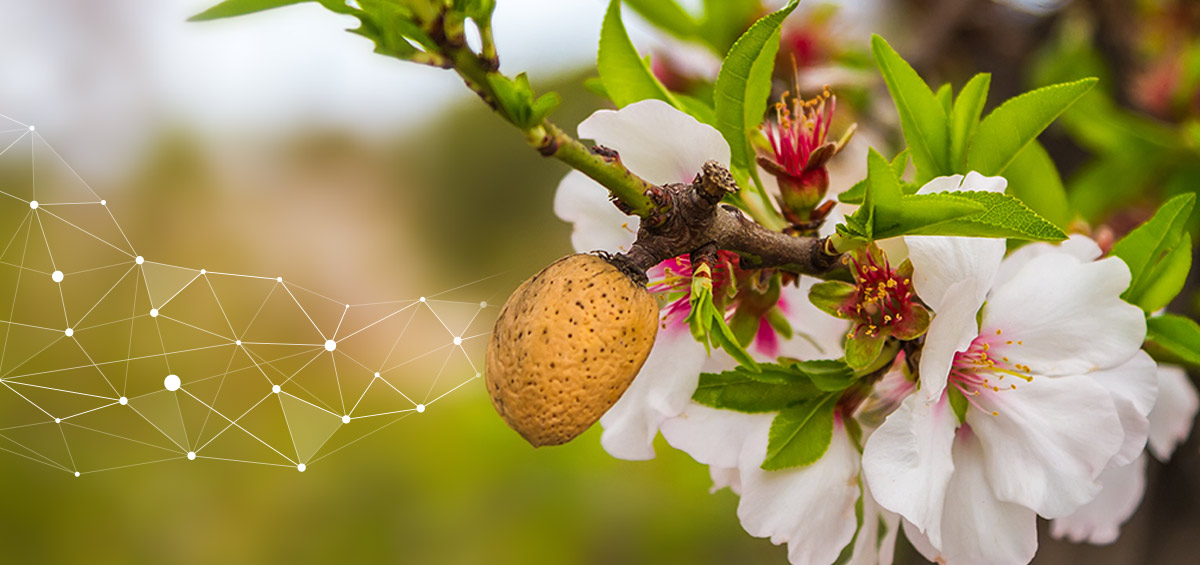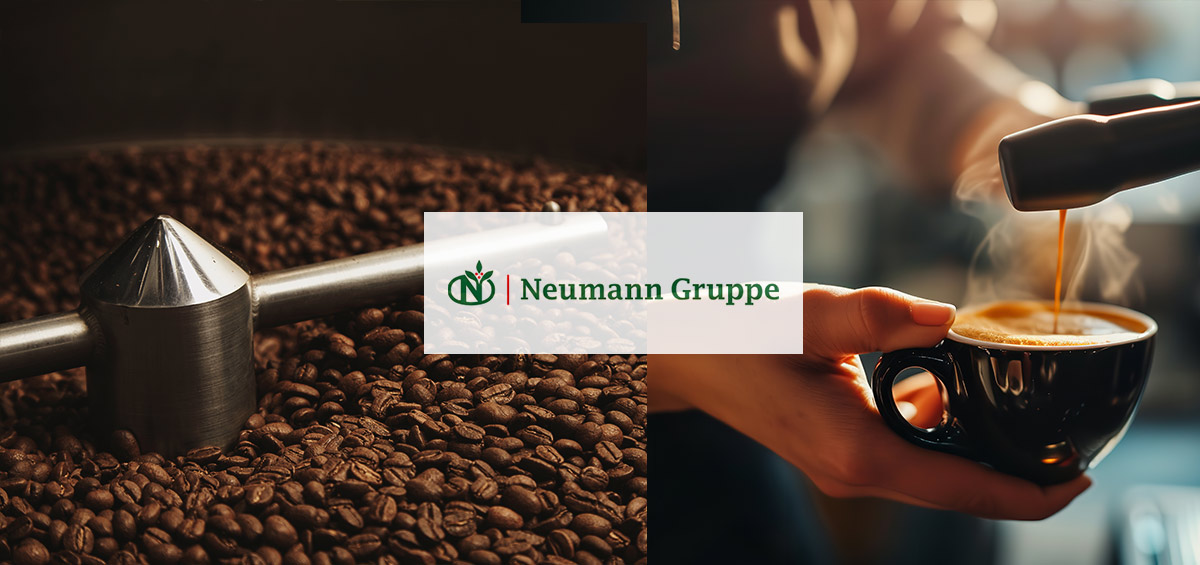A sub-irrigation system can be an advantageous watering system for field crops as well as in controlled environments such as plant nurseries, commercial greenhouses and even hydroponic systems.
However, especially in outdoor cropping systems, the soil type and permeability, water table and climatic conditions must be uniquely suited to support a sub-irrigation system. And even when they do, optimizing a sub-irrigation system can be complicated to design and manage.
So, here is what farmers need to know about installing and managing sub-irrigation as their watering system of choice.
Table of Contents
Sub-Irrigation: What Is It and How Does it Work?
Also sometimes referred to as seepage irrigation, is a method of delivering water to plants from below the root zone by controlling the level of the water. It is an effective method of water conservation while also having low labor needs once the system has been installed.
In agricultural fields, sub-irrigation is accomplished by encouraging the water table to raise or lower. But sub-irrigation does not flood the field up to the ground level, like what occurs in flood or furrow irrigation systems. Because of this, sub-irrigation is not typically found in arid or semi-arid systems as there still needs to be sufficient moisture to germinate seeds at the surface level. In fact, areas that need high levels of drainage to be farmable are good candidates for a sub-irrigation system as the same network of drainage pipes and tiles installed to move excess water out of the ground can also be repurposed to add water when plant growth requires irrigation.
In controlled environmental agriculture (CEA) systems such as in commercial greenhouses for crop or horticulture production, sub-irrigation is accomplished by setting potted plants into a managed water reservoir and allowing capillary action to pull water up into the soil and root system of the plant.
Quite simply, sub-irrigation works through the natural process of capillary action which wicks moisture upwards through the soil, or in the case of greenhouse and horticulture systems, through the growing medium.
Growers manage how close the level of the water is below a plant’s root zones and the time it is there to encourage effective wicking without flooding the field and creating over-saturation which is detrimental to healthy crop growth.
Sub-Irrigation Versus Surface Irrigation: The Difference
The difference between sub-irrigation and surface irrigation is that in the case of sub-irrigation the water moves up to the plant root zone. Versus surface irrigation, the water moves down to the plant root zone.
All other types of irrigation systems other than sub-irrigation, including natural rainwater, are accomplished through surface irrigation. Sub-surface irrigation is sometimes confused with sub-irrigation but that is really a method of surface irrigation, not sub-irrigation. In the case of sub-surface irrigation, drip irrigation lines are buried just below the top surface of the soil, but the water is still delivered down toward plant roots.
Another way to think of surface irrigation is that it is a method of delivering water that uses the soil surface as the conduit. Drip irrigation, spray irrigation, flood irrigation and center pivot irrigation systems are all different methods of surface irrigation. Only sub-irrigation works from the bottom up.
Sub-Irrigation Systems and Their Parts
Sub-irrigation, a method of irrigation crops and potted plants from the bottom up rather than the top down, is designed in different ways depending on if a sub-irrigation system is being used in field cropping versus a commercial greenhouse.
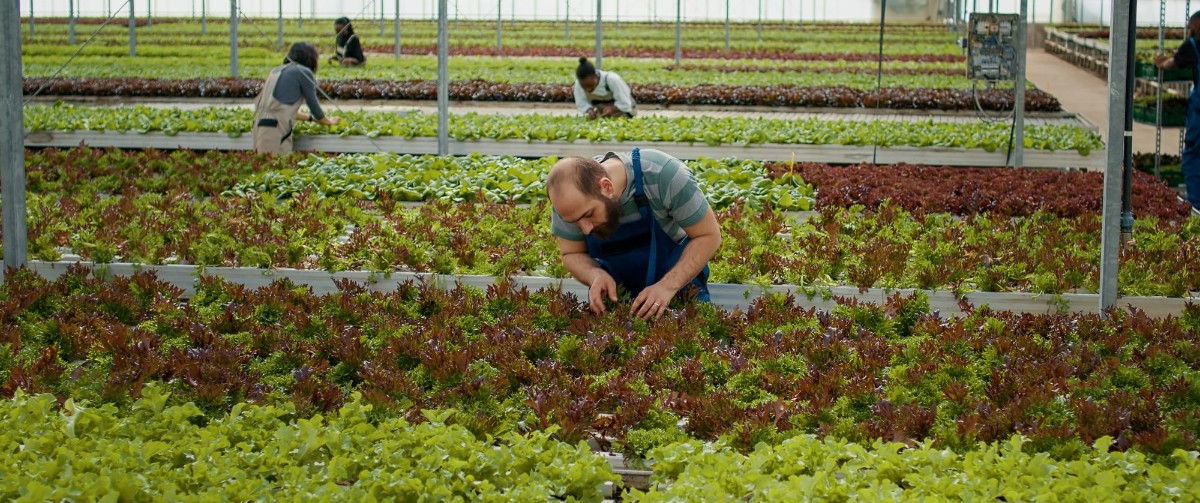
Sub-Irrigation in Field Cropping Systems
Sub-irrigation in field cropping systems is controlled by adding or draining water from the water table, which raises or lowers the level at which the groundwater sits. Farmers use a system of pipes, drainage tiles, pumps and valves to control the egress and ingress of water into the groundwater system.
Because sub-irrigation is dependent upon water being able to wick up through the soil, this system only works in specific soil types and field conditions. The soil should be highly permeable, with good capillary action that encourages water to move up rapidly as well as laterally. Silt or clay layers in soil are not conducive to sub-irrigation as these types of layers tend to slow down the capillary rise and become impermeable. On the other hand, very fine, sandy loam topsoil that doesn’t have a layer of impermeable subsoil generally doesn’t support enough permeability to support a crop’s irrigation needs.
· Sub-Irrigation to Saturation Method
In this technique, water is added through drainage tiles until saturation up to the soil surface. Then an outlet valve is opened and the water is drained out. This method is not encouraged because it leads to significant water run-off, leaches fertilizers and salts into the root zone and may lead to degradation of water quality.
· Controlled Injection Sub-Irrigation
A specific amount of water is injected into sub-irrigation tiles when the soil has reached a pre-determined soil matric potential (SMP). SMP is a measurement of the availability in the soil profile to hold water for plant uptake and use. The injected water moves through the soil via capillary rising in a period of about two to four hours, depending on the soil type, initial wetness, and delivery method.
· Constant Water Level Sub-Irrigation
This method of sub-irrigation uses a float valve to maintain a constant level of water in the topsoil. Salt accumulation in the soil using this method is a significant problem.
· Sub-Drainage Mode
This is essentially simply draining enough, but not too much, water out of a field by opening and blocking drainage tiles to maintain a high enough water table level to support capillary rising to the plant root zones. Appropriate soil types, a high water table and the design, slope and engineering of the field are essential to make this type of system work.
Greenhouse and Nursery Sub-Irrigation Methods
Sub-irrigation is commonly used in commercial greenhouse production because it is a labor-efficient and plant-healthy way to irrigate while also allowing a grower to capture and reuse water and nutrient run-off. Sub-irrigation is often referred to as a ‘zero runoff’ system in commercial greenhouse production.
· Capillary Mat Systems
Potted plants are set on a thick fabric mat lying on an impermeable surface. The mat is kept constantly moist via a slow application of drip water. Plants wick up moisture from the mat through holes in the bottom of the pot.
· Trough System
Potted plants are placed along the edge of a plastic or metal trough that is installed at a very slight slope from one end of the other. Water, oftentimes including a nutrient solution, is pumped into the trough and flows down the length of the trough encouraged by gravity. Pots wick up moisture from the trough. At the low end of the trough, the water is captured for reuse and recycled back through the system.
· Ebb and Flow Benches
Ebb and flow bench systems combine a greenhouse benching design to efficiently hold potted nursery plants with sub-irrigation methods. Channels in the bottom of typically 4’ to 6’ wide watertight benches are filled with water and usually a nutrient solution. The benches may be installed as either fixed or movable. The nutrient solution is pumped into the solutions and held there long enough for the potting medium to absorb it, then it is drained, captured and recycled for future use.
· Flood Floors
Flood floors are similar to the ebb and flow benches however the whole system is designed on a watertight concrete floor, rather than using benches. Potted plants are set on the floor. Slotted PVC pipes are installed in the middle of the floor and funnel the water and nutrient solution from large holding tanks onto the floor and then after a set period of time allowing the plants to wick up the moisture, a valve is flipped and the water is drained back into the holding tanks to be reused. The floor must be smooth, so water doesn’t have spots where it may pool and it can all drain away.
Pros and Cons of Sub-Irrigation
Like any irrigation system, sub-irrigation has advantages and disadvantages farmers and growers need to consider.
Advantages of Sub-Irrigation
· Sub-Irrigation Conserves Water and Nutrients
Especially in commercial greenhouse operations where water and nutrient solutions can easily be captured and stored for reuse, sub-irrigation is a highly resource-efficient system. In field cropping, it depends on the type of sub-irrigation method used although there are design solutions for capturing sub-irrigation water run-off even in a field cropping system..
· Sub-Irrigation Saves on Labor
Once a system has been set up, sub-irrigation methods are very labor efficient. They typically only require monitoring of the below-ground moisture level, data which can be gathered remotely using soil moisture sensors, opening and closing drainage tiles and potentially turning pumps on and off.
· Sub-Irrigation Can Be Used as a Drainage System
Drainage systems can double as a sub-irrigation system for farmers in areas that must install drainage tiles and pipes before planting.
Disadvantages of Sub-Irrigation
· Sub-Irrigation Requires Uniform Soil Types and Level Fields
Uniformity is key for successful sub-irrigation. Areas of a field that are sloped or have different types of soil will affect the permeability and capillary rising of water and may cause the water table to rise either too high or not high enough for effective sub-irrigation.
· Sub-Irrigation Can Lead to Salt Build-Up
Depending on the method of sub-irrigation, it can lead to an unhealthy build-up of salt in the topsoil. For this reason, water with high salt content shouldn’t be used.
· Sub-Irrigation Requires Adequate Water Supply
Even though sub-irrigation can be designed to capture and reuse water, a grower still must have access to enough water to effectively inject into the soil and raise the water table. Because of this, if farmers have restricted access to irrigation waters sub-irrigation may not be appropriate.
Managing a Sub-Irrigation System With Farm Management Software
No matter what type of sub-irrigation system a farmer uses and whether it is in field crop or greenhouse horticultural production, effective management of the system using informed data is key to a financially successful system.
Recording and tracking crucial measurements like SMP (SMP), the amount of water released and the time it is held in the field and the nutrients added into the water solution can all be tracked using AGRIVI’s farm management software system. This data is crucial to analyzing crop production ROI and help farmers make informed decisions to improve their crop quality, yield and resource efficiency.
In addition, AGRIVI analytics showing water usage per crop and field can be viewed daily, enabling informed, in-season decision-making. AGRIVI helps farmers optimize their sub-irrigation systems.
Watch the video and find more about the benefits of a comprehensive digital solution for your farm:
